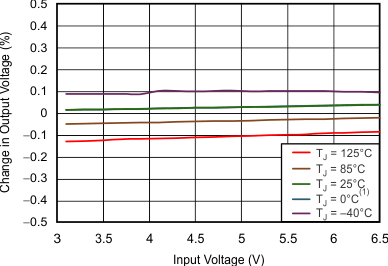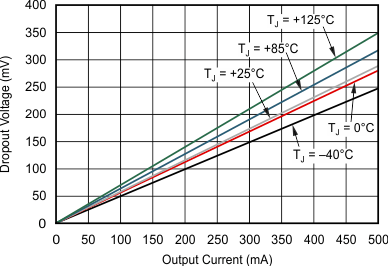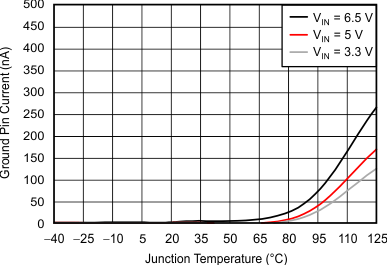SBVS087M June 2008 – June 2018 TPS735
PRODUCTION DATA.
- 1 Features
- 2 Applications
- 3 Description
- 4 Revision History
- 5 Specifications
- 6 Detailed Description
- 7 Application and Implementation
- 8 Power Supply Recommendations
- 9 Layout
- 10Device and Documentation Support
- 11Mechanical, Packaging, and Orderable Information
Package Options
Mechanical Data (Package|Pins)
Thermal pad, mechanical data (Package|Pins)
Orderable Information
5.6 Typical Characteristics
over operating temperature range (TJ= –40°C to +125°C), VIN = VOUT(nom) + 0.5 V or 2.7 V, whichever is greater; IOUT = 1 mA, VEN = VIN,COUT = 2.2 μF, CNR = 10 nF. Typical values are at TJ = 25°C, (unless otherwise noted).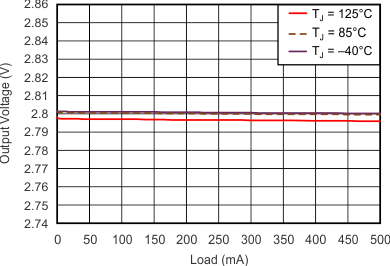
| The y-axis range is ±2% of 2.8 V |
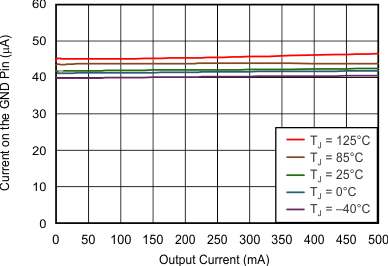
Output Current
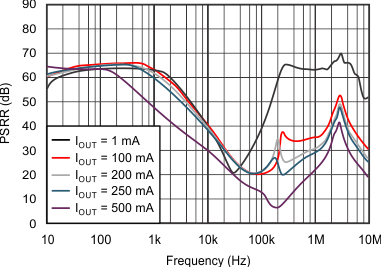
| (VIN – VOUT = 0.5 V) |
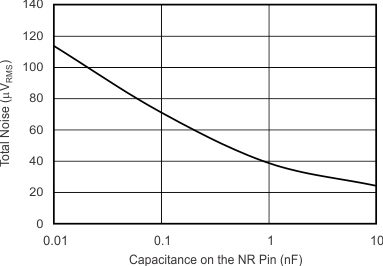
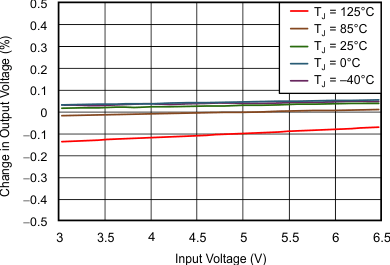
| IOUT = 100 mA | ||
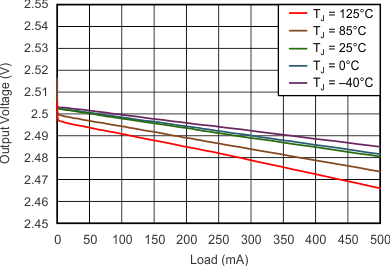
| The y-axis range is ±2% of 2.5 V |
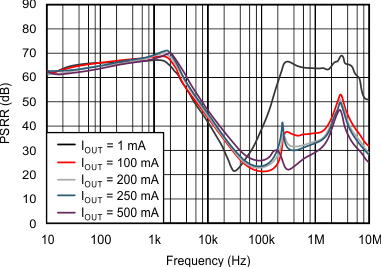
| (VIN – VOUT = 1 V) |
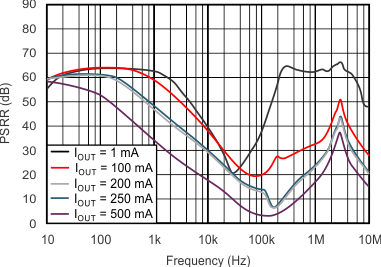
| (VIN – VOUT = 0.3 V) |
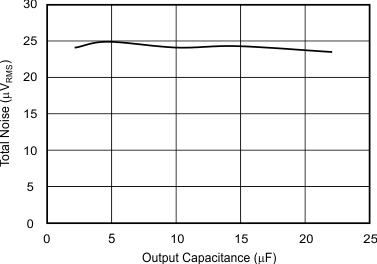
| CNR = 0.01 µF, IOUT = 1 mA |
